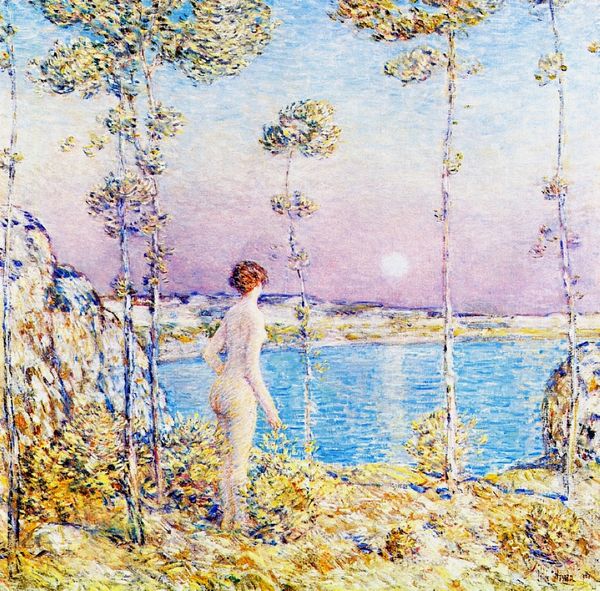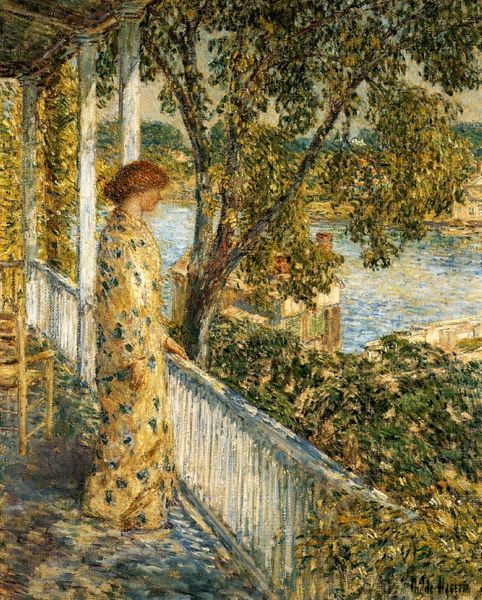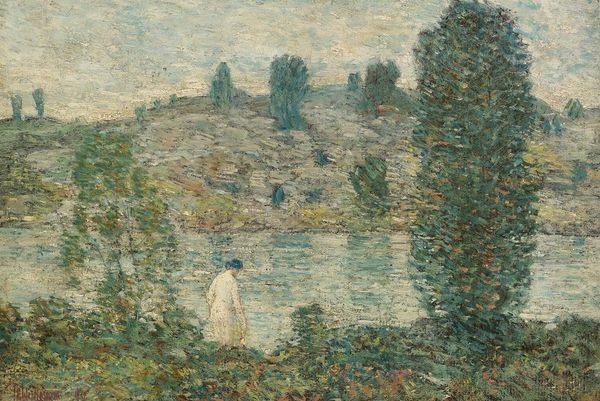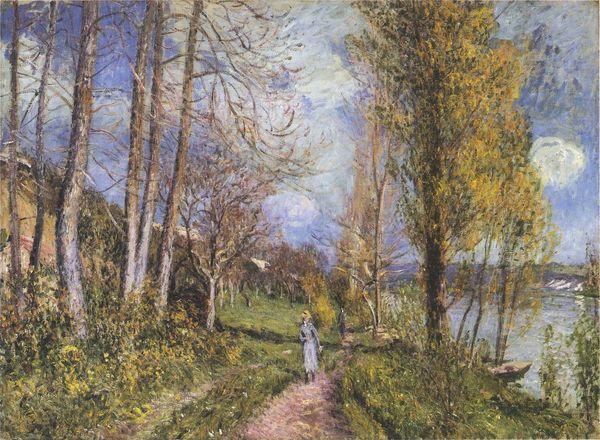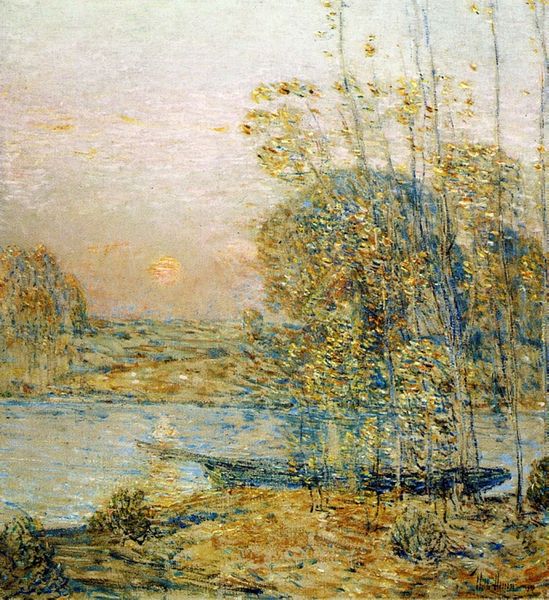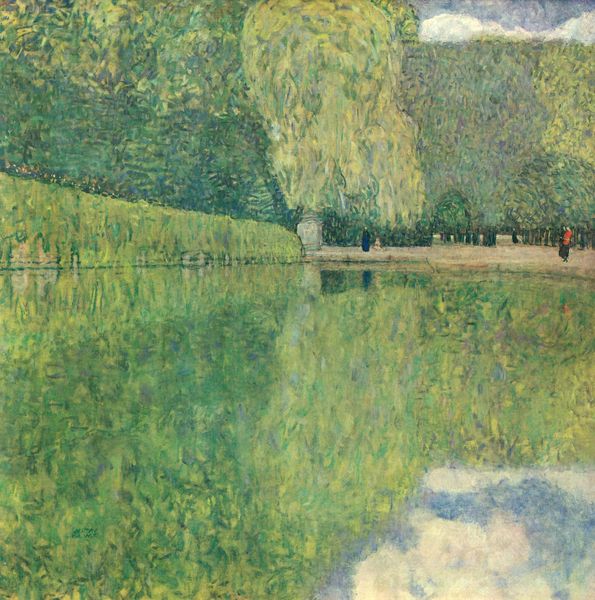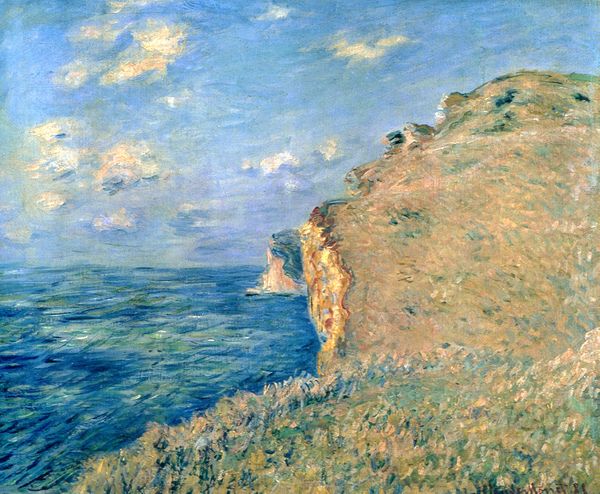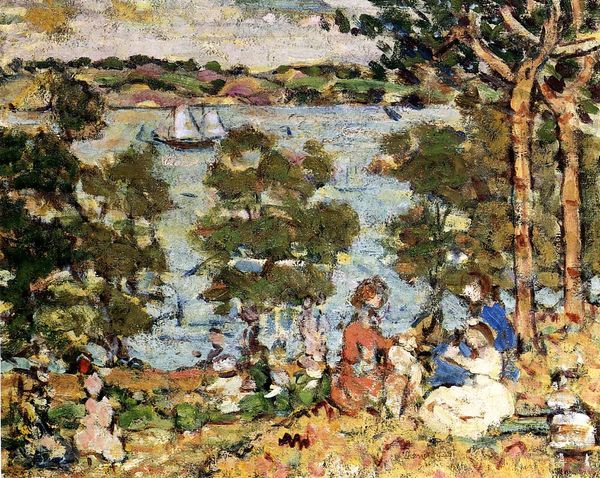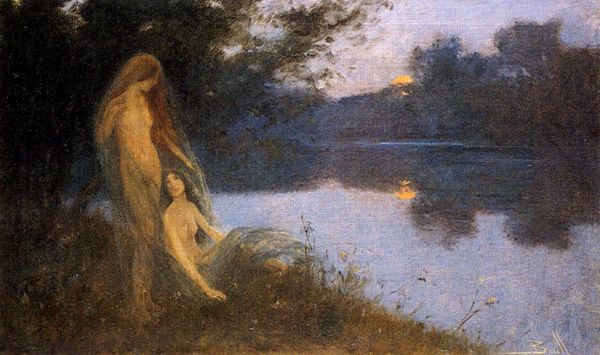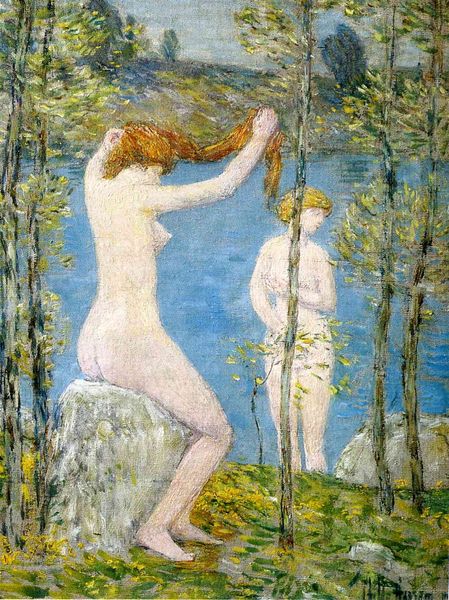
Copyright: Public domain
Curator: So, here we have Childe Hassam's "The Bather," painted in 1904 using oil paint applied *en plein air.* It's an iconic work within the Impressionist landscape tradition. Editor: Ah, yes. My first thought is light and freedom, almost an echo of the idyllic innocence often depicted in the nude within classical painting. The canvas glows, wouldn’t you say? Curator: Absolutely, and if you look closely at the brushstrokes, particularly in the water and the trees, you can see Hassam employed an impasto technique. I always appreciate it because it really adds texture and depth. Thinking about the conditions he and his contemporaries worked under really puts the finished work into perspective. Editor: Impasto also builds a sense of materiality, doesn't it? Layers of applied color. You get the sense of the thick viscosity of the paint itself as a medium—the work feels immediate, honest, visceral even. In terms of its production, one thinks about Hassam having to wrestle the natural scene into something permanent on canvas in the outdoor setting itself. Curator: And I see so much joy and melancholy intertwined in it. This lone figure positioned within the landscape feels at once a part of nature and separate from it. Doesn't the Romantic tradition haunt Impressionism? Editor: Interesting perspective, I feel the weight of its craft lessens the sense of "haunt." Considering the broader societal context, though, who do you imagine consumed paintings like this? Where would these canvases typically exist once sold, displayed and discussed? Curator: I imagine affluent collectors, mostly, folks interested in the visual language of romance, beauty and a touch of voyeurism, as was common at that time. The artist creates what sells to stay afloat. That's the eternal equation for any practicing artist. The economics matter! It's nice to think he spent golden afternoons painting *en plein air*. It probably also involved swatting mosquitos. Editor: Quite! But back to materiality - you see, focusing on the paint, the technique, the scene, all of it reveals Hassam's careful observations. He has turned something that existed within nature into commodity. Thinking this way really brings history to life. Curator: Agreed, and perhaps that final alchemy transforms fleeting moments into something lasting and cherished, something still worth talking about generations later, as you and I are now. Editor: A worthwhile reminder to ponder our place in all this materiality, ourselves as artistic vessels existing within a wider world in motion.
Comments
No comments
Be the first to comment and join the conversation on the ultimate creative platform.

